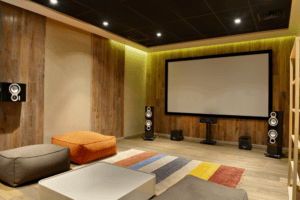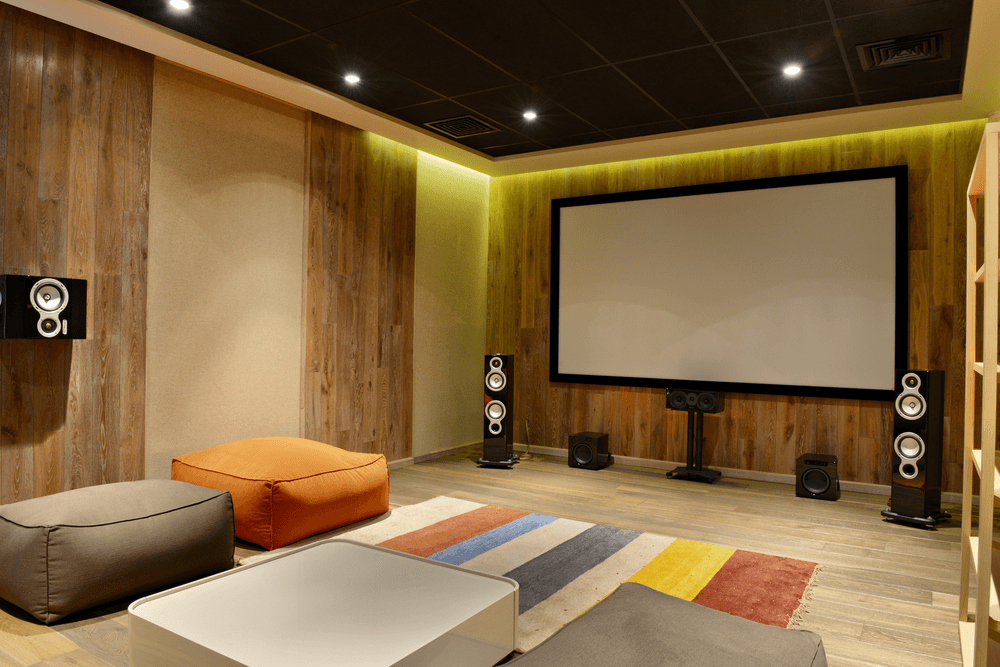Home theatre design is changing for good. The emergence of voice control and the elimination of wired speakers is simplifying setup, while laser projectors replace TV screens to create a convincing cinema experience in the home.
Here are the biggest trends shaping the future of home theatre:
Projectors
Projectors have been utilised in home theatres for over twenty years, but rapid improvements in technology and price mean they are now the preferred choice over TVs which are being resigned to the living room.
A perfect example is laser projectors. These are far superior to lamp projectors because they are brighter and produce better colour and contrast.
Laser projectors are such an improvement over lamp projectors that some people have made the comparison of LCD to OLED. While the two technologies aren’t comparable to a projector, we can see what they mean in terms of advancement.
The latest projectors, such as the Epson EB-L610U 6000, also allow you to connect a smartphone or laptop wirelessly with MirrorScreen, so you can cast and mirror what you see on your projector screen.
The bottom line is the best home theatres use projectors, and the great thing is there are projectors available for any size of room – short throw and ultra-short throw projectors for small spaces, and standard projectors for large spaces.
Voice control
Whether it’s Google Assistant, Amazon Alexa or in-built voice control, voice control is shaping how we experience our home cinema.
Many TVs now have voice control, and if they don’t, there are separate devices like Google Home and Alexa available. Some projectors also come with voice control. A good example is the Acer V6820i, which has Alexa and a 4K UHD resolution.
The Holy Grail of voice control is technologies that run through Wi-Fi because these can connect everything together and work throughout the home. This is why ‘smart homes’ are getting such a buzz. Exciting times indeed.

Multiple screens
When one screen isn’t enough, just add more! That’s what a lot of people do in their quest to create the ultimate home cinema.
Home cinemas with multiple screens are akin to a mission control room, in that there are multiple TVs for displaying different content. This is particularly popular with sports fanatics who never want to miss the action.
This multi-screen setup is becoming more common due to cheaper technology becoming available. It’s now possible to get multiple high-end OLED televisions for what it would have cost to buy just one a few years ago.
Wireless sound
Wires are messy and complicate speaker setup, which is why many people are permanently switching to wireless sound in their home cinema.
If you’ve heard of a Bluetooth soundbar, this is the same principle, except you, have multiple wireless speakers (usually in a surround sound setup) which are connected to a wireless amp, such as the Bowers & Wilkins Formation.
With this setup, you can have as many wireless speakers as you like, and the beauty is you can move the speakers around as you please without being tethered by a wire. This freedom comes at no cost to sound quality or control either.



